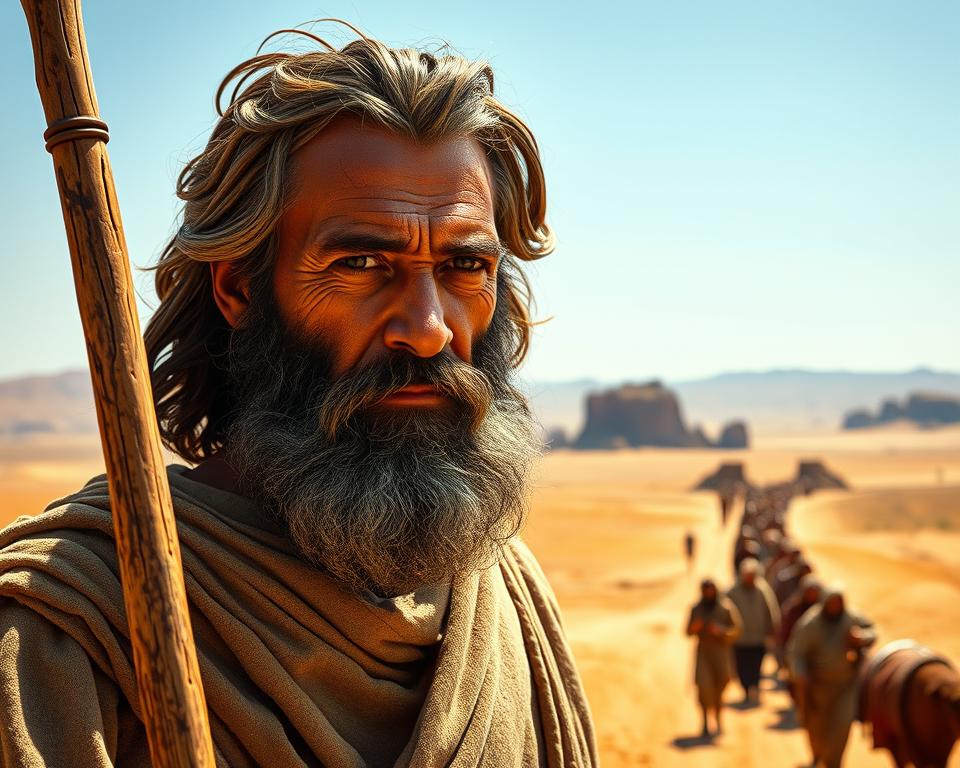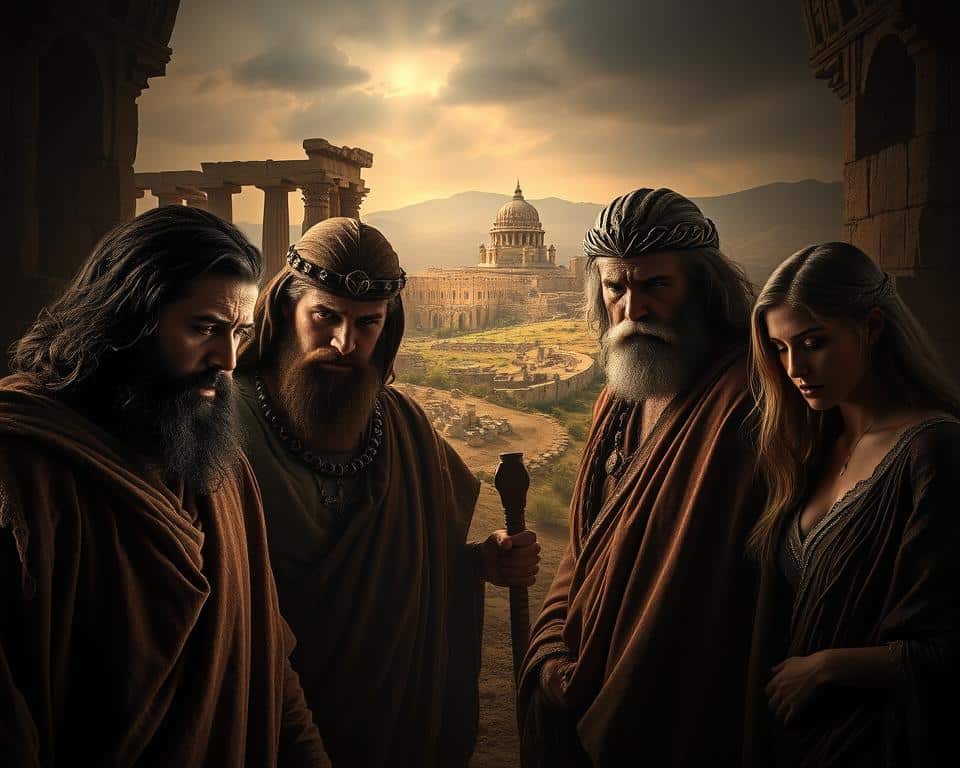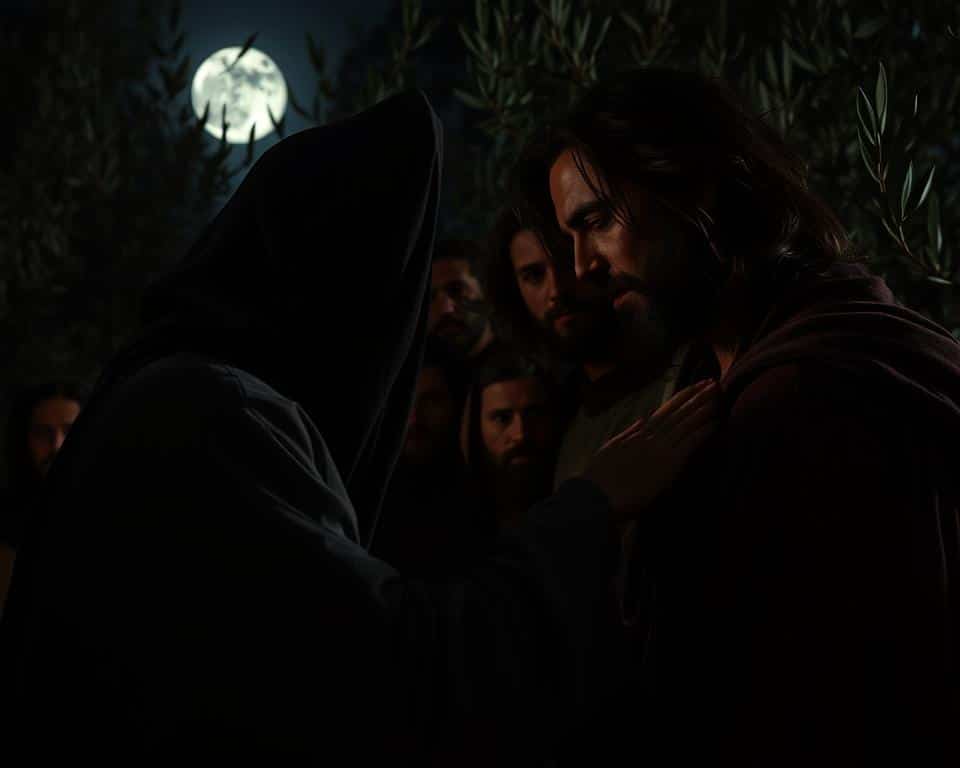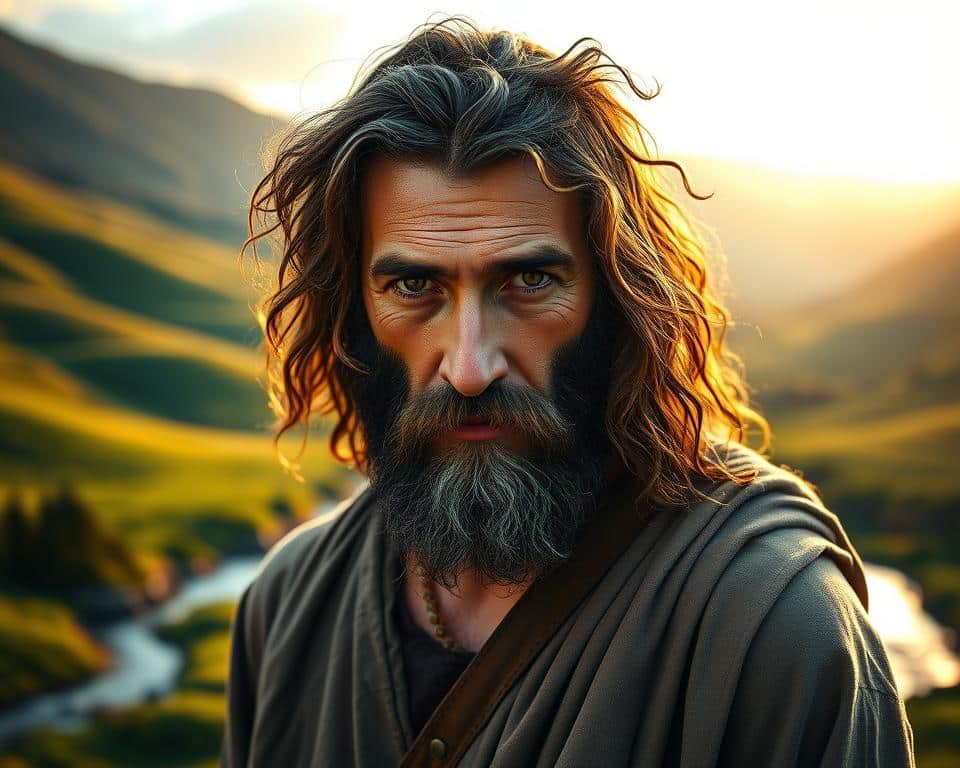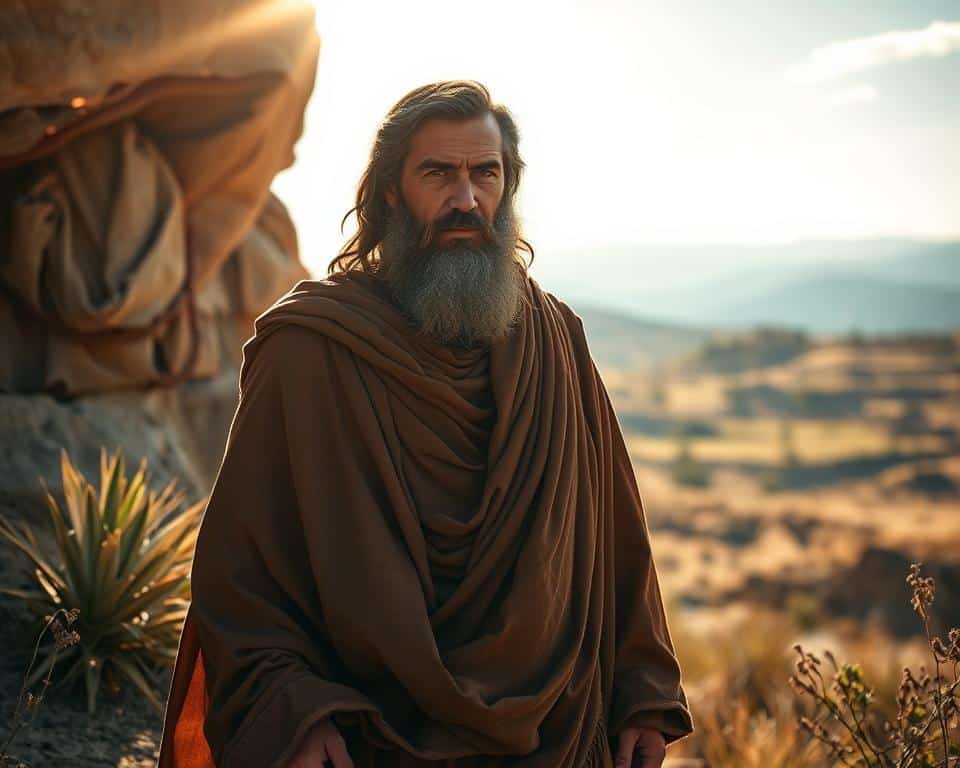What does it take to lead millions through uncertainty and toward a greater purpose? The story of Moses offers profound insights into this question. From his humble beginnings to becoming a transformative leader, his journey is filled with lessons that still resonate today.
Moses’ story begins with a divine calling at the burning bush. This moment marked a turning point, as he accepted the challenge to guide the Israelites out of slavery. His faith in God’s plan became the foundation of his leadership.
Throughout his journey, Moses faced immense challenges, from opposition to self-doubt. Yet, he remained steadfast, showing us the importance of perseverance and trust in God’s way. His life teaches us that true leadership is rooted in humility, faith, and a willingness to serve others.
As we explore his story, you’ll discover practical lessons that can inspire your own journey of faith and leadership. Let’s dive in and learn from one of history’s most remarkable leaders.
Introduction to Moses’ Journey
Few figures in history embody faith and leadership like Moses. His story begins in ancient Egypt, where he was born into a time of great oppression. The Hebrews were enslaved, and Pharaoh’s decree threatened the lives of all newborn Hebrew boys. Yet, Moses’ life was preserved by his mother’s courage and God’s providence.

Moses’ early years were marked by a unique blend of privilege and hardship. Raised in Pharaoh’s household, he was educated in the wisdom of Egypt. However, his heart remained tied to his Hebrew heritage. This duality prepared him for the role he would later play in history.
At the age of 40, Moses fled Egypt after defending a Hebrew slave. He spent the next 40 years in Midian, working as a shepherd. This period of solitude shaped his character and deepened his faith. It was here that God called him to lead His people out of bondage.
Moses’ journey is not just a personal tale of faith. It is a communal story of redemption and hope. His leadership brought the Hebrews out of slavery and toward the Promised Land. Through his obedience, Moses became a vessel for God’s plan, showing us the power of trust and perseverance.
As you reflect on Moses’ journey, consider how his faith and determination can inspire your own path. His life reminds us that even in the face of uncertainty, God’s purpose prevails.
Early Life in Ancient Egypt
Moses’ childhood in Egypt was shaped by both privilege and oppression. Born into a time of great turmoil, his early years were marked by extraordinary circumstances. The Hebrews were enslaved under the rule of Pharaoh, and their lives were filled with hardship. Yet, Moses’ story began with a miracle—his mother’s courage and God’s providence saved him from Pharaoh’s decree.
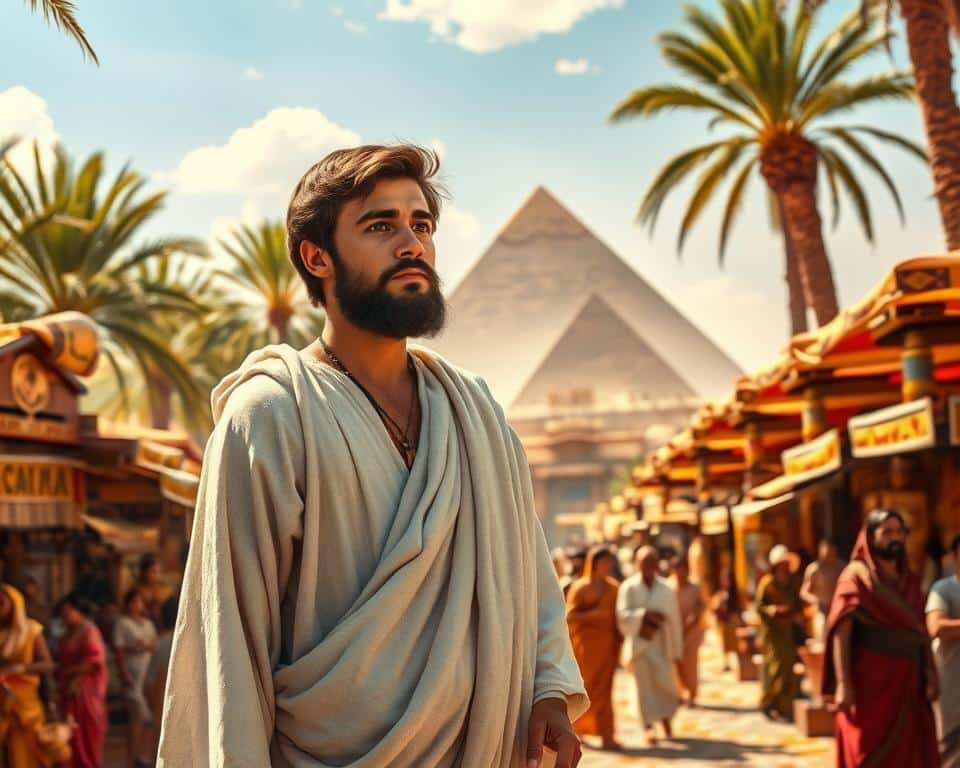
Raised in Pharaoh’s household, Moses was exposed to the wealth and wisdom of Egyptian culture. He received an education that prepared him for leadership. However, his heart remained tied to his Hebrew heritage. This duality would later define his role as a leader and mediator between two worlds.
The environment of slavery in Egypt was harsh. The Hebrews endured forced labor and oppression, yet they remained resilient. Moses’ early exposure to this suffering shaped his compassion and sense of justice. It also set the stage for his eventual calling to lead his people to freedom.
Moses’ formative years in Egypt were a blend of privilege and hardship. They prepared him for the challenges he would face later in life. His story reminds us that even in difficult circumstances, God’s plan is at work, shaping us for His purpose.
Family, Heritage, and Identity
The foundation of Moses’ identity was deeply rooted in his family and heritage. From the moment of his birth, his life was marked by divine intervention and the courage of those around him. His story reminds us that God’s plan often unfolds through the love and faith of those closest to us.
Moses’ Birth and Early Protection
Moses’ birth occurred during a time of great danger. Pharaoh’s decree threatened the lives of all Hebrew male children. Yet, his mother displayed extraordinary faith by hiding him for three months. When she could no longer conceal him, she placed him in a basket and set him adrift on the Nile, trusting God’s protection.
This act of faith not only saved Moses but also set the stage for his future role. Found by Pharaoh’s daughter, he was raised in the royal household, yet his Hebrew identity remained intact. His early protection is a testament to God’s hand in his life and the courage of his family.
The Role of His Family Members
Moses’ family played a crucial role in shaping his identity. His brother Aaron and sister Miriam were instrumental in his journey. Aaron became his spokesperson, while Miriam watched over him as a child, ensuring his safety. Their support highlights the importance of family in fulfilling God’s purpose.
The traditions of his Hebrew heritage also guided Moses. Despite being raised in Egyptian royalty, he never forgot his roots. This dual identity prepared him to lead a diverse people, bridging two worlds with wisdom and faith.
Moses’ family background profoundly influenced his leadership. Their faith and courage laid the foundation for his mission. As you reflect on his story, consider how your own family and heritage shape your journey of faith.
Life of Moses
Moses’ journey is a powerful example of how personal identity shapes leadership. His early experiences were marked by challenges that molded his character. Born into a time of oppression, he was saved by his mother’s courage and raised in Pharaoh’s household. This unique background gave him a dual identity—both an adopted Egyptian and a Hebrew by heritage.
Growing up in Egypt, Moses was exposed to the wealth and wisdom of Egyptian culture. Yet, his heart remained tied to his Hebrew roots. This duality prepared him to lead a diverse people, bridging two worlds with wisdom and faith. His personal identity deeply influenced his approach to leadership, making him a compassionate and just person.
Moses’ time in Midian as a shepherd further shaped his character. Here, he learned humility and patience, qualities essential for leading the Israelites. His ability to balance the cultural influences of Egypt and his Hebrew heritage made him a pivotal figure in history. His story reminds us that our personal heritage plays a crucial role in fulfilling our destiny.
As you reflect on Moses’ life, consider how your own background shapes your journey. His story teaches us that God’s plan often unfolds through our unique experiences and identities. Embrace your heritage, and let it guide you toward your purpose.
Key Moments from Moses’ Childhood
The early years of Moses’ life were marked by divine intervention and pivotal moments. From his dramatic rescue to the first signs of leadership, these events shaped his destiny and prepared him for his role in God’s plan.
The Basket in the Nile
One of the most iconic moments in Moses’ childhood was his rescue from the Nile. At that time, Pharaoh’s decree threatened the lives of all Hebrew male children. Moses’ mother, Jochebed, hid him for three months before placing him in a basket and setting him adrift on the river. This act of faith symbolized hope and trust in God’s protection.
The basket in the Nile was more than a rescue—it was a divine plan in action. Found by Pharaoh’s daughter, Moses was raised in the royal household, yet his Hebrew identity remained intact. This moment shaped a generation of faith and set the stage for the exodus.
Initial Signs of a Leader
Even in his early years, Moses displayed qualities that hinted at his future leadership. His compassion for the oppressed and his sense of justice were evident. These traits would later define his role as a guide for the Israelites.
Moses’ childhood was a blend of privilege and hardship. Raised in Egypt’s royal court, he was educated in its wisdom, yet his heart remained tied to his Hebrew roots. This duality prepared him to lead a diverse people with humility and faith.
As you reflect on these formative moments, consider how God’s hand was at work in Moses’ life. His story reminds us that even in uncertain times, faith and obedience can lead to extraordinary outcomes.
Moses and the Exodus from Egypt
The story of the Exodus is one of the most defining moments in biblical history. It showcases God’s power and Moses’ unwavering faith. This event marked the liberation of the Israelites from centuries of slavery in Egypt.
Confronting Egyptian Oppression
Moses’ confrontation with Pharaoh was a battle of wills. Despite witnessing God’s power through the plagues, Pharaoh’s heart remained hardened. This resistance led to the final plague—the death of the firstborn—which finally compelled Pharaoh to release the Israelites.
The Exodus began with urgency. The Israelites left Egypt, carrying with them the hope of a promised land. This moment was not just a physical journey but a spiritual awakening for God’s people.
The Miracle of the Red Sea
As the Israelites fled, Pharaoh’s army pursued them. Trapped between the sea and their enemies, Moses trusted God’s guidance. The waters of the Red Sea parted, creating a path of deliverance. This miracle symbolized God’s protection and Moses’ role as a leader of faith.
The crossing of the Red Sea remains a powerful reminder of God’s ability to overcome impossible odds. It underscored Moses’ leadership and the Israelites’ journey toward freedom.
As you reflect on this pivotal event, consider how faith and obedience can lead to extraordinary outcomes. The Exodus teaches us that God’s plan always prevails, even in the face of great opposition.
The Burning Bush Encounter
One of the most pivotal moments in Moses’ story occurred at a burning bush on Mount Horeb. This encounter was not just a miracle—it was a divine call to action. While tending his flock, Moses saw a bush that was on fire but not consumed. This moment marked the beginning of his journey as a prophet and leader.
Divine Calling and Its Simplicity
God spoke directly to Moses from the bush, saying,
“Take off your sandals, for the place where you are standing is holy ground.”
This simple yet profound command highlighted the sacredness of the moment. God’s message was clear: Moses was chosen to lead the Israelites out of Egypt.
The encounter was a direct and personal interaction. God identified Himself as the God of Abraham, Isaac, and Jacob, connecting Moses to a rich heritage of faith. This moment emphasized the importance of obedience and trust in God’s plan.
Impact on Moses’ Purpose
The burning bush encounter transformed Moses’ life. Before this, he was a shepherd in Midian, living a quiet life. Afterward, he became a prophet with a mission to free his people. This event set his destiny in motion, showing that God’s call often comes in unexpected ways.
Moses’ hesitation and self-doubt were met with reassurance. God promised to be with him every step of the way. This assurance gave Moses the courage to accept his role. His journey teaches us that faith and obedience can lead to extraordinary outcomes.
As you reflect on this moment, consider how God might be calling you in your own life. The burning bush reminds us that even the simplest encounters can have a profound impact on our purpose.
Receiving the Ten Commandments at Mt. Sinai
At the heart of biblical history lies a moment that shaped faith and law for generations—the giving of the Ten Commandments. This event at Mount Sinai marked a turning point for the Israelites, establishing a covenant between God and His people. It was here that Moses received the foundational principles that would guide their lives and faith.
The Covenant Ceremony
The covenant ceremony was a profound moment of divine interaction. After three days of preparation, the Israelites gathered at the base of Mount Sinai. God descended in a storm, with thunder and trumpets, emphasizing the sacredness of the occasion. Moses ascended the mountain to receive the commandments, written on stone tablets by God’s own hand.
This covenant was not just a set of rules but a promise. God declared,
“Now if you obey me fully and keep my covenant, then out of all nations you will be my treasured possession.”
This agreement underscored the relationship between God and His people, rooted in obedience and faith.
Establishing Religious Tradition
The Ten Commandments became the cornerstone of biblical law. They provided a moral framework for the Israelites, guiding their worship, relationships, and daily conduct. These laws were not just for their time but have influenced countless generations, shaping the ethical foundations of the Bible.
Through this event, a religious tradition was firmly established. The Israelites were instructed to celebrate annual festivals, such as Passover and the Feast of Weeks, to remember God’s deliverance and provision. These practices kept their faith alive and connected them to their covenant with God.
As you reflect on this moment, consider how the principles given at Mount Sinai continue to guide believers today. The Ten Commandments remind us of God’s unchanging truth and His desire for a relationship with His people.
Leadership and Justice in Action
Leadership rooted in justice and fairness defines Moses’ legacy. His actions as a leader were not just about guiding a nation but also about defending the vulnerable and upholding God’s principles. Through his example, we learn that true leadership is built on compassion, humility, and a commitment to fairness.
Defending the Oppressed
Moses’ life is filled with examples of standing up for the oppressed. One of the earliest instances was when he defended a Hebrew slave from an Egyptian taskmaster. This act of courage, though it led to his exile, showed his deep sense of justice and willingness to act on behalf of the vulnerable.
Later, as the leader of the Israelites, Moses consistently advocated for the marginalized. He ensured that laws were in place to protect widows, orphans, and foreigners. His leadership was not just about authority but about creating a society where fairness prevailed.
Practicing Fairness
Moses’ approach to leadership was marked by fairness. When his father-in-law, Jethro, observed him judging disputes from morning till evening, he advised Moses to delegate responsibilities. This system ensured that smaller matters were handled by trustworthy leaders, while Moses focused on more significant issues.
This delegation not only made the process more efficient but also empowered others to lead. It was a practical application of fairness, ensuring that justice was accessible to all. As Jethro advised, leaders were chosen based on their integrity, fear of God, and ability to resist bribery.
Studying Moses’ leadership through the biblical book of Exodus provides valuable insights. Scholars note that his servant leadership qualities—compassion, humility, and fairness—are timeless principles. By examining his actions, we can learn how to lead with integrity and justice in our own lives.
As you reflect on Moses’ example, consider how you can apply these principles in your leadership journey. Whether in your family, workplace, or community, leading with fairness and defending the oppressed can make a lasting impact.
Legal and Ethical Contributions
The legal and ethical framework established by Moses remains a cornerstone of biblical teachings. Through the Torah, he provided a comprehensive guide for justice, morality, and community living. His role as a lawgiver shaped the moral order of the Israelite community and continues to influence faith and practice today.
The Role as Lawgiver
Moses’ leadership extended beyond guiding the Israelites; he was instrumental in establishing the Torah. This sacred text contains 613 laws that address every aspect of life, from worship to social justice. These laws were not just rules but a covenant between God and His people.
One of the most significant contributions was the Ten Commandments. These principles, given at Mount Sinai, set the foundation for ethical living. As stated in Exodus 20,
“You shall have no other gods before me.”
This commandment, along with others, emphasized the importance of faithfulness and integrity.
Foundations of Moral Order
Moses’ laws were designed to create a just and compassionate society. They included protections for the vulnerable, such as widows, orphans, and foreigners. For example, Deuteronomy 24:17 instructs,
“Do not deprive the foreigner or the fatherless of justice.”
These laws reflected God’s heart for fairness and equality.
Another key fact is the emphasis on personal responsibility. The law required individuals to act with honesty and integrity, ensuring that justice was accessible to all. This approach laid the groundwork for a community rooted in faith and mutual respect.
As you explore these teachings, consider how they remain relevant today. The principles Moses established continue to guide believers in living a life of faith and justice.
Historical Perspectives on Moses
Exploring the historical and scholarly views on Moses reveals a fascinating blend of faith and evidence. His story, deeply rooted in biblical tradition, has also been the subject of extensive academic debate. Scholars and historians have examined archaeological findings and ancient texts to better understand his role in history.
Scholarly Debates and Views
Scholars have long debated the historicity of Moses. Some view him as a symbolic figure, representing the collective memory of the Israelite people. Others argue that his life aligns with historical events, such as the exodus from Egypt. These divergent perspectives highlight the complexity of interpreting ancient narratives.
For example, some historians point to the lack of direct archaeological evidence for the exodus. However, others argue that the story reflects a cultural memory of liberation, preserved over generations. This balance between faith and reason invites thoughtful study.
Evidences from Archaeology and Texts
Archaeological discoveries provide valuable insights into the world of Moses. Artifacts from the Late Bronze Age, such as the Amarna letters, mention Semitic people in Egypt. These findings support the biblical context of the Israelite presence in Egypt.
Ancient texts, like the Song of the Sea, also offer clues. This early poem, believed to date back to the 12th century B.C.E., references the exodus narrative. Such evidence underscores the enduring impact of Moses’ story on Judaism and beyond.
In Judaism, Moses is revered as a prophet and lawgiver. His legacy is central to the faith, shaping its ethical and legal traditions. As you explore these perspectives, consider how Moses’ story continues to inspire faith and historical inquiry.
Artistic and Cultural Depictions
Art and media have long captured the essence of Moses’ story, offering unique perspectives on his faith and leadership. From classical paintings to modern documentaries, these portrayals have shaped how we understand his role in history. Let’s explore how artists and creators have brought his journey to life.
Visual Representations in Art and Media
One of the most iconic depictions is Rembrandt’s “Moses Breaking the Tablets.” This masterpiece captures the intensity of the moment when Moses, filled with righteous anger, shatters the tablets bearing the Ten Commandments. The painting reflects both his humanity and his unwavering commitment to God’s law.
In modern times, documentaries and films have reimagined Moses’ story for new audiences. These portrayals often highlight his leadership during the exodus and his connection to Mount Sinai. They bring his journey to life, making it accessible and relatable.
The influence of Judaism is evident in many artistic interpretations. From ancient manuscripts to contemporary art, Moses is often depicted as a central figure in Jewish tradition. These works emphasize his role as a lawgiver and a prophet, connecting his story to the broader narrative of faith.
As you explore these depictions, consider how they deepen your understanding of Moses. Whether through a painting or a film, each portrayal offers a unique lens into his life and legacy.
Moses as a Model of Faith and Resilience
Moses’ journey is a testament to unwavering faith and resilience in the face of overwhelming challenges. From his early rescue by Pharaoh’s daughter to leading the Israelites through the Red Sea, his life exemplifies trust in God’s plan. His story reminds us that faith can overcome even the most daunting obstacles.
One of the most powerful examples of his resilience is the parting of the Red Sea. Faced with Pharaoh’s army and an impassable body of water, Moses trusted God’s guidance. The miracle that followed not only saved the Israelites but also symbolized the power of faith in impossible situations.
Moses’ leadership was marked by humility and perseverance. Despite facing constant criticism and rebellion, he remained steadfast. His ability to lead a diverse group of people through the wilderness for 40 years shows the strength of his character and his reliance on God.
Even his early life, shaped by the courage of Pharaoh’s daughter, highlights the importance of divine intervention. Her act of compassion set the stage for his future role as a leader. This familial influence underscores how God uses others to fulfill His purpose.
As you reflect on Moses’ journey, consider how his faith and resilience can inspire your own life. Whether facing personal challenges or leading others, his example teaches us to trust in God’s plan and remain steadfast in our purpose.
Unique Elements of His Spiritual Journey
The story of Moses is filled with moments that reveal the depth of his faith and the uniqueness of his journey. One of the most intriguing aspects is the meaning behind his name. In Scripture, his name is explained as “drawn from the water,” a direct reference to his rescue from the Nile as a baby. This moment not only saved his life but also set the stage for his future role as a leader.
The Etymology of Moses’ Name
The name Moses, or “Moshe” in Hebrew, carries a profound meaning. Scholars like the Maharal have explored its deeper significance, linking it to the idea of “drawing out.” This symbolism reflects not only his physical rescue but also his mission to draw the Israelite people out of slavery and into freedom. His name serves as a reminder of God’s providence and purpose in his life.
This unique background sets his story apart from ordinary narratives. From his early rescue to his role as a leader, every aspect of his journey points to a divine plan. His name encapsulates the essence of his mission—bringing hope and deliverance to his people.
Over time, his Israelite identity evolved, shaped by his experiences and faith. Raised in Pharaoh’s household, he was exposed to Egyptian culture, yet his heart remained tied to his heritage. This duality prepared him to lead a diverse group of people with wisdom and compassion.
As you reflect on Moses’ story, consider how your own legacy can inspire resilience and faith. His journey reminds us that even in the most challenging circumstances, God’s purpose prevails. Let his example encourage you to trust in God’s plan for your life.
Modern Interpretations and Media Representations
Modern media has brought new light to the timeless story of Moses. Through documentaries and series, his journey is being reimagined for today’s audience. These adaptations aim to make the ancient narrative relatable while staying true to its roots.
One standout example is Netflix’s “Testament: The Story of Moses.” This series blends dramatic reenactments with insights from theologians and historians. It explores Moses’ life from his time in Egypt to his role as a prophet and liberator. The show’s success, with 13.5 million streams in its first five days, highlights its broad appeal.
Bringing the Story to Today’s Audience
Modern adaptations like “Testament” use advanced storytelling techniques to engage viewers. The series features diverse filming locations, including Morocco, to recreate the Sinai desert and ancient Egypt. This attention to detail helps bring the biblical world to life.
However, these portrayals often face challenges. Balancing religious tradition with contemporary storytelling can be difficult. Some critics argue that modern versions oversimplify complex theological concepts. Yet, they also spark meaningful conversations about faith and history.
Grounding Interpretations in the Torah
While modern media offers fresh perspectives, it’s essential to ground interpretations in the Torah. The biblical text remains the foundation of Moses’ story. Adaptations should complement, not replace, the original Scripture.
For example, “Testament” incorporates lesser-known Jewish texts, like midrash, to add depth to Moses’ character. This approach respects the richness of Jewish traditions while making the story accessible to a wider audience.
As you explore these modern portrayals, remember to view them as tools for understanding, not substitutes for the biblical account. They can inspire faith and curiosity, encouraging you to dive deeper into God’s Word.
Final Thoughts on a Life of Leadership
Moses’ legacy as a leader offers timeless lessons in faith and resilience. His journey, from being saved by Pharaoh’s daughter to parting the Red Sea, shows the power of trusting God’s plan. His humility, obedience, and unwavering faith inspire us to lead with purpose and compassion.
His actions remind us that true leadership is rooted in service. Whether guiding the Israelites or receiving the Ten Commandments, Moses demonstrated that faith can overcome even the greatest challenges. His story continues to guide people in their personal walk with God.
As you reflect on his life, consider how his example can shape your own journey. Let his legacy encourage you to trust in God’s plan and lead with integrity. His story is a testament to the enduring power of faith and obedience.

